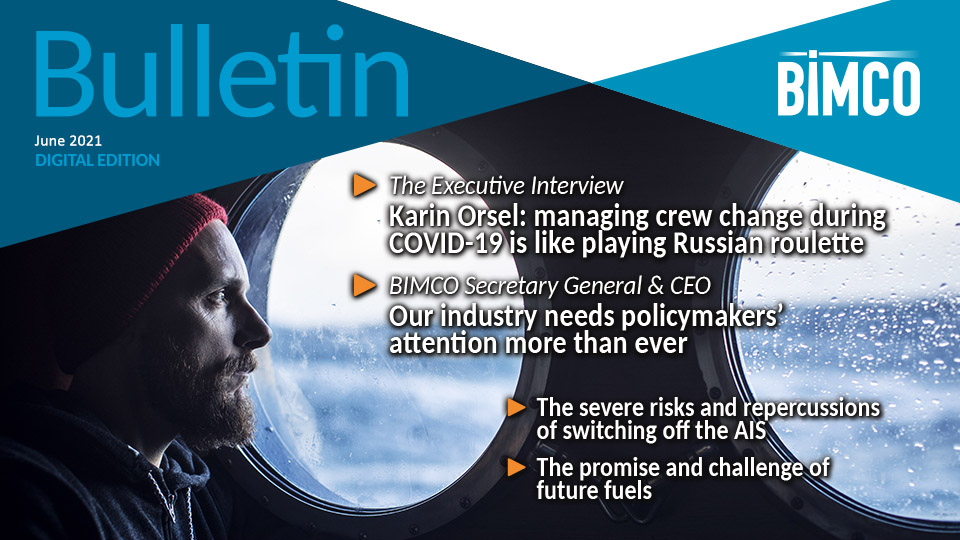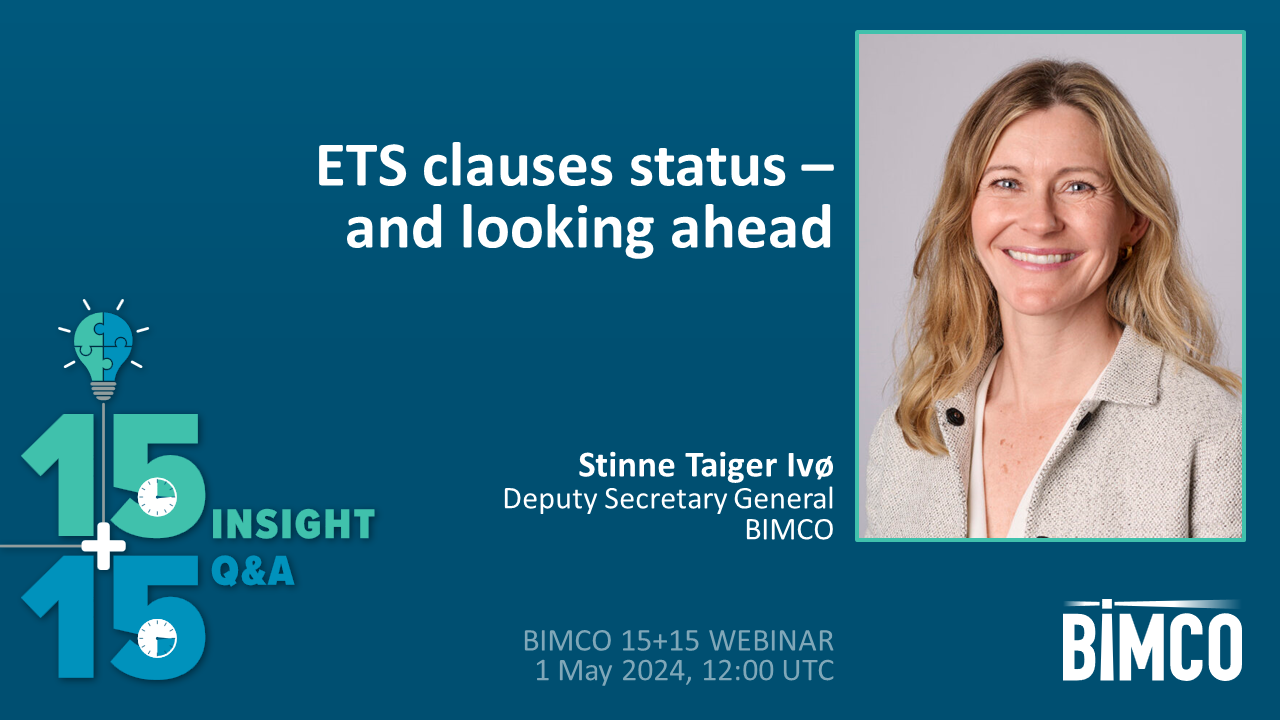EEXI Transition Clause for Time Charter Parties 2021
Overview
This clause addresses compliance with the Energy Efficiency Existing Ship Index (EEXI) and allocates responsibility and costs for implementing EPL and SHAPOLI modifications under a time charter party.
EEXI Transition Clause for Time Charter Parties 2021
Notwithstanding any other provision in this Charter Party, the Owners and the Charterers (the "Parties") agree as follows:
"EEXI" means the Energy Efficiency Existing Ships Index as set out in MARPOL Annex VI (as amended from time to time).
"EEXI Regulations" means RESOLUTION MEPC.328(76) - AMENDMENTS TO MARPOL ANNEX VI (2021 REVISED MARPOL ANNEX VI) implementing EEXI and associated guidelines and/or any subsequent amendments.
"EEXI Modifications" means any physical or technical modifications required to bring the Vessel in compliance with the EEXI Regulations.
"Effective Date" means the Vessel’s next annual, intermediate or renewal survey, whichever comes first, on or after 1 January 2023.
(a) The Parties acknowledge and accept that the Vessel is required to comply with the EEXI Regulations from the Effective Date and that this may require EEXI Modifications.
(b) In the event that EEXI Modifications are required, these shall be completed by the Owners prior to the Effective Date.
(c) This subclause (c) shall only apply where the EEXI Modifications are limited to an Engine Power Limitation (EPL) or Shaft Power Limitation (SHAPOLI):
(i) The specification of such modifications and the estimated new maximum speed and corresponding consumption figures of the Vessel shall be determined by the Owners and the Charterers shall be informed in writing by the Owners without undue delay.
(ii) The Owners shall use their reasonable endeavours to plan and effect such modifications during the Vessel’s service without any loss of time to the Charterers. However, pursuant to subclause (a), the Owners shall have the right to take the Vessel out of service to effect such modifications.
(iii) Upon request and without undue delay the Charterers shall provide an itinerary for the Vessel and shall update the Owners in case of any changes. The Owners shall give the Charterers not less than three (3) weeks’ written notice of the anticipated timeframe and location of such modification works.
(iv) The Owners shall be responsible for and bear the cost of such modifications including procurement, purchase, payment, installation and any trials associated therewith. Any actual loss of time to the Vessel (including bunkers consumed during such time) due to the installation and trials of such modifications (including deviation, if any) shall be for the Owners’ account.
(v) As soon as reasonably possible following the implementation of such modifications, the Owners shall notify the Charterers in writing of the new maximum speed and corresponding consumption figures of the Vessel and other consequential changes to the Vessel’s description. The Owners shall as soon as practicably possible notify the Charterers in writing of the date from which the Vessel’s power is certified to be limited and from this date the new maximum speed and corresponding consumption figures shall, if lower than the existing warranted maximum figures, replace those existing warranted maximum figures. Other consequential changes to the Vessel description shall be logically amended as from the same date. Any reduction in the Vessel’s maximum speed and corresponding consumption shall be within the Vessel’s performance curve derived from the Charter Party’s existing warranted figures. All other warranted speed and consumption figures shall remain unchanged.
(vi) The Charterers shall not order the Vessel to prosecute voyages at a speed which would exceed the new maximum speed when implemented under this subclause (c).
(d) EEXI Modifications other than or in addition to EPL or SHAPOLI shall be subject to the Charterers' prior agreement and approval, which shall not be unreasonably withheld or delayed by the Charterers.
Background
The amendments to MARPOL Annex VI (adopted in a consolidated revised Annex VI) are due to enter into force on 1 November 2022, with the requirements for EEXI certification coming into effect from 1 January 2023. The new regulations will require applicable ships to have their attained EEXI calculated and verified against the required EEXI for the ship - a technical measure for achieving energy efficiency based on the design of a ship.
It means that a large part of the global fleet may need to implement technical ship modifications to comply with the new regulations. We recommend including the EEXI Transition Clause in both existing and future time charter parties. It should also be used for recently built ships that may already be Energy Efficient Design Index (EEDI) compliant, but which may still require steps to be taken to meet the compliance threshold for EEXI.
For the majority of ships needing modifications, these will probably be in the form of either Engine Power Limitation (EPL) or Shaft Power Limitation (SHAPOLI). For this reason, the clause focuses on these two types of modifications in detail. The clause may also be used to address other energy saving technical measures that may be implemented to achieve compliance. However, such use of other energy saving measures is subject to agreement between the parties.
The fundamental principle behind the clause is that it requires both parties to the contract to cooperate and collaborate to help attain compliance.
Drafting team
The BIMCO EEXI Transition Clause for Time Charter Parties 2021 is the result of a collaborative and consensual process between owners, charterers, P&I clubs and legal experts. BIMCO is grateful to the following individuals:
Peter Eckhardt, F. Laeisz (Chairman)
Panos Zachariadis, Atlantic Bulk Carriers Management, Ltd.
Takaaki Hashimoto, NYK
Nicola Ioannou, Oceanfleet
Kyriakos Kourieas, Interorient Marine Services Limited
Ann Shazell, Cargill Ocean Transportation
David Sale, BP Shipping
Kelly Vouvoussiras and Ody Plapoutas, Rio Tinto
Alessio Sbraga, HFW
Helen Barden, North P&I Club
Lasse Brautaset, Nordisk
BIMCO secretariat support was provided by Deputy Secretary Generals Søren Larsen and Lars Robert Pedersen together with Grant Hunter and Mads Wacher Kjærgaard from the Contracts and Clauses team.
Guidance Notes
These guidance notes are intended to provide an insight into the thinking behind the BIMCO EEXI Transition Clause for Time Charter Parties 2021. They also explain how the clause is intended to operate and the allocation of responsibilities and costs between the parties. If you have any questions about the clause, please contact us at contracts@bimco.org and we will be happy to assist.
Definitions
For ease of reading the clause sets out four definitions – “EEXI”; “EEXI Regulations”; “EEXI Modifications”; and “Effective Date”.
"EEXI Modifications" – refers to any physical or technical modification required to enable the ship to comply with the new regulations. It does not prescribe what sort of modifications are required. This reflects the position adopted in the regulations.
“Effective Date” – It follows from the EEXI regulations that the deadline for each ship is not 1 January 2023 but rather it is the next survey the ship must undergo on or after 1 January 2023, as stipulated in MARPOL Annex VI, regulation 5.4.7.
Subclause (a)
Here the parties acknowledge and accept that modifications “may” have to be made to the chartered ship to achieve compliance. It is framed in this way because the need for modifications to achieve the required energy efficiency will depend on the age, type and design of the ship, and this will vary from ship to ship. However, the use of the clause implies that the parties believe there is a distinct possibility that modifications will be needed and to make this happen it will require cooperation between owners and charterers within the framework set out in subclause (c). The reality is that the actions needed to achieve compliance can be assessed early. Given this, charterers are likely to require knowledge of the consequences to the ship’s performance after modification before agreeing to add this clause to any existing contract.
Subclause (b)
It is the owners’ responsibility to ensure that any modifications needed to achieve compliance are completed prior to the Effective Date.
Subclause (c)
This is the central focus of the clause and applies only to modifications which are in the form of EPL or SHAPOLI. It sets out the process before, during and after the modifications are implemented as well as the allocation of responsibilities between the parties.
Subclause (c)(i) clarifies that it is the owners who determine the type of modifications to be carried out to the ship. The owners should plan modifications well in advance of the Effective Date and inform the charterers at the earliest opportunity of their intentions for coordinated planning purposes. It also envisages that the owners should indicate to the charterers the estimated new maximum speed (laden/ballast) and consumption figures of the ship (corresponding to the type of modification) ahead of the modifications. This is an important provision as the charterers will need to know this in advance so that they can understand the impact this may have on future commercial operations and plan accordingly. However, the owners should take care to review existing speed and consumption warranties to establish the likely impact of an EPL and SHAPOLI on a ship's performance.
We believe that it would be inappropriate for the charterers to have a say over the type of modifications required to comply with the regulations – principally because the clause provides clearly that it is the owners who are responsible for completing the modifications on time (subclause (b)) and at their cost (see subclause (c)(iv)).
Subclause (c)(ii) – it is anticipated that the modification work (i.e. installation of an EPL or SHAPOLI) should only result in minimal disruption to the operation of the ship. In most cases it should be possible to carry out the modification work during the ship's service - the owners are obliged to use reasonable endeavours to achieve this. However, there may be circumstances where this is not possible, in which case the owners have the express right to take the ship out of service to comply with the regulations.
Subclause (c)(iii) – Close cooperation and information sharing between the parties is essential. It is important for the owners that they get the charterers’ employment intentions in a timely manner so they can plan and carry out the modifications. This requires the charterers to keep the owners updated on the planned movements of the ship.
It is equally important that the charterers know where and when the owners plan to carry out the required works. Because of this, the subclause also requires the owners to give the charterers at least three weeks’ notice of the duration and intended place for the modifications. It may be the case that the charterers will want to know this information at an earlier time; even at the time of agreeing the clause.
Subclause (c)(iv) – This stipulates that the owners will bear the costs associated with the modifications, including any actual loss of time (including bunkers consumed) due to installation and trials. We reiterate that it is anticipated that in most cases it should be possible to carry out the modification work during the ship's service without appreciable loss of time.
Subclause (c)(v) – Once the modifications have been completed, the owners are to notify the charterers of the new maximum speed and consumption figures (which might vary somewhat from the estimated figures provided previously). EPL and SHAPOLI will reduce the maximum speed of a ship only and the ship's performance curve will otherwise remain unchanged. To the extent that the maximum speed of the ship (prior to modifications) is warranted under the charter party, it is expected that this is the only warranted speed (laden/ballast and corresponding consumption figures) which will require replacement (as the ship will no longer be in a physical position to achieve this maximum speed). If the service speed warranted under the charter party is less than the maximum speed capability of the ship and the modification does not reduce the maximum speed below the warranted speed, the existing warranties should remain in place.
Following the completion of the modifications the ship’s classification society will have to come on board the ship to survey the modification made. Latest by the Effective Date, the Recognised Organisation must verify that the attained EEXI is equal to, or lower, than the required EEXI and attest this in the ship’s certificate. The surveyor will place a lock or seal on the device, physically or electronically, and the engine limitation will take effect. For this reason, it is on the date of certification, not installation, of which the owners must notify the charterers that the new maximum speed and consumption figures replace the existing ones.
It is envisaged that the EPL and SHAPOLI may also impact terms contained in the ship's description and as such other consequential changes to the ship's description should be logically amended also from the date the ship's power is certified to be limited. In this connection it is important to note that EPL or SHAPOLI does not lower the MCR of a ship’s main engine. Rather, it introduces a new MCRlim value which is the new maximum power allowed to be used under normal conditions. It is suggested to add the MCRlim value to the ship’s description if the ship’s MCR value is already included.
Subclause (c)(vi) – the charterers are expressly prohibited from ordering the ship to override the engine limitation device to exceed the new maximum speed. Overriding the limitation is a safety feature which may only be used under certain conditions as stipulated in the EPL guideline issued by the IMO. Special requirements related to documentation prevails in such circumstances.
Subclause (d)
Some owners may choose alternative or additional energy efficiency solutions to EPL or SHAPOLI to achieve compliance with the regulations. There are many different types of energy saving devices on the market. There are also alternative solutions which are still under development. As such, these all have different cost, time and commercial implications for the parties which are difficult to provide for in a clause. As it is very difficult to seek to regulate this in circumstances where the contractual allocation of the time, risk and cost of alternative solutions could vary from case to case, the clause leaves such considerations to the parties to agree on separately. That said, this subclause provides a basis for the parties to enter into negotiations if deemed appropriate and because the implementation of such additional modifications could be of assistance in achieving compliance with the Carbon Intensity Indicator (CII) regulations which also enter into force at the same time as EEXI.
Related Help & Advice
Create or edit a contract
The one-stop digital shop for all the standard maritime contracts and clauses you’ll ever need.
Latest Related News
-
VPS Bunker Alerts
Veritas Petroleum Services (VPS) publish regular Bunker Alerts based entirely on fuel samples. The bunker samples are analysed by VPS whenever a short-term quality issue is identified in a specific port or region.
-
BIMCO calls on IMO to solve legal inconsistencies in ship recycling conventions
BIMCO, together with Bangladesh, India, Norway, Pakistan and the ICS, has submitted a paper ahead of the 81st Marine Environment Protection Committee (MEPC) meeting on 18-22 March 2024. The paper highlights the need to solve possible conflicting requirements of the Hong Kong Convention and the Basel Convention which could have severe consequences for shipowners, ship recycling facilities and ships if unresolved.
-
UN 3077 Solid Bulk Cargoes - Carriage requirements under the IMSBC Code
BIMCO providing its view on how the carriage requirements of UN 3077 environmentally hazardous substances are implemented in the IMSBC Code.
-
UN 3077 solid bulk cargoes
BIMCO continues to receive enquiries on UN 3077 solid bulk cargoes and how they should be handled under the International Maritime Solid Bulk Cargoes ( IMSBC) Code. BIMCO provides an explanation including an interpretation on how these cargoes are viewed in the IMSBC Code.
-
Climate Change Glossary
BIMCO has published a climate change glossary to clarify and harmonise definitions and terminology to ensure that the discussions around climate change and potential solutions for the shipping industry are based on a mutual understanding of what the commonly used terms mean.
ELSEWHERE ON BIMCO
Holiday calendar
BIMCO's Holiday Calendar covers general holidays in over 150 countries, plus local holidays and working hours in more than 680 ports around the world.
Learn about your cargo
For general guidance and information on cargo-related queries.





